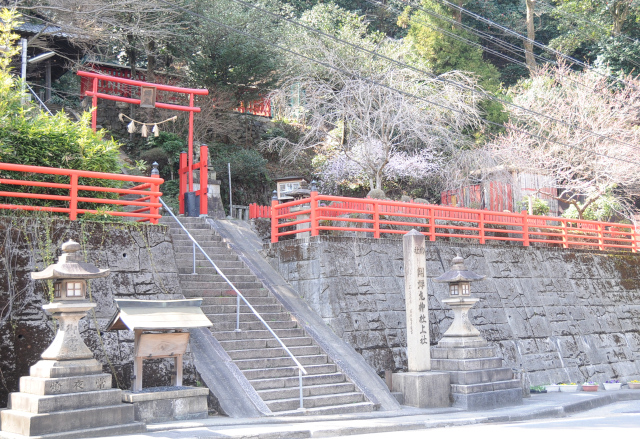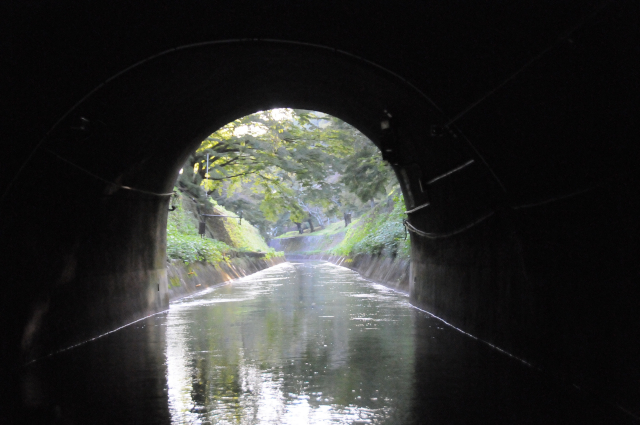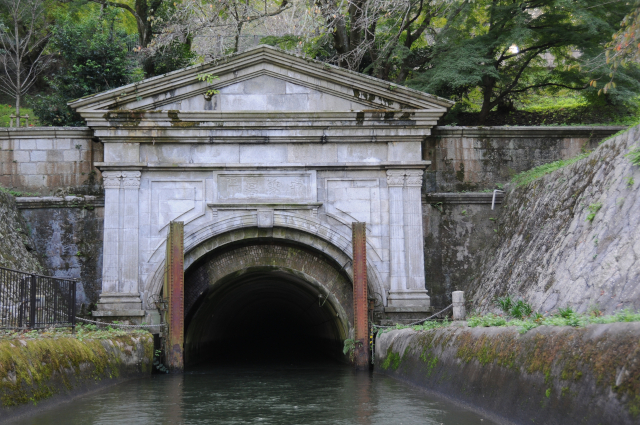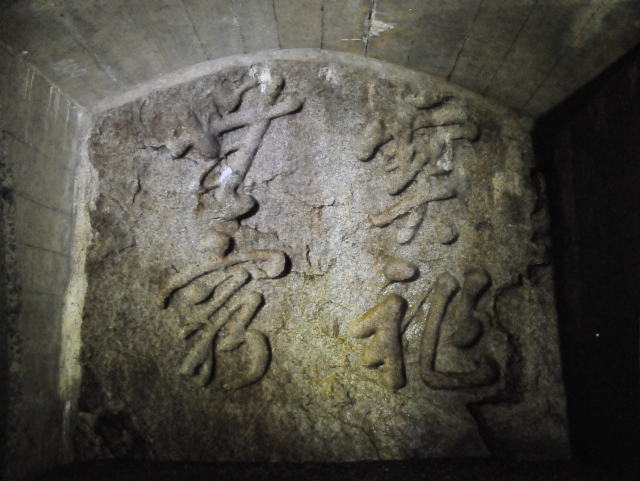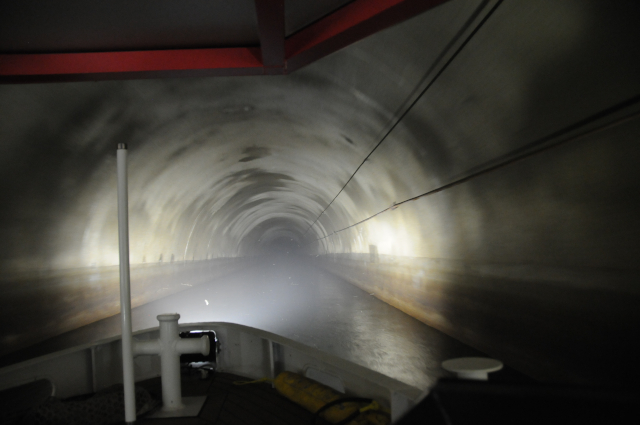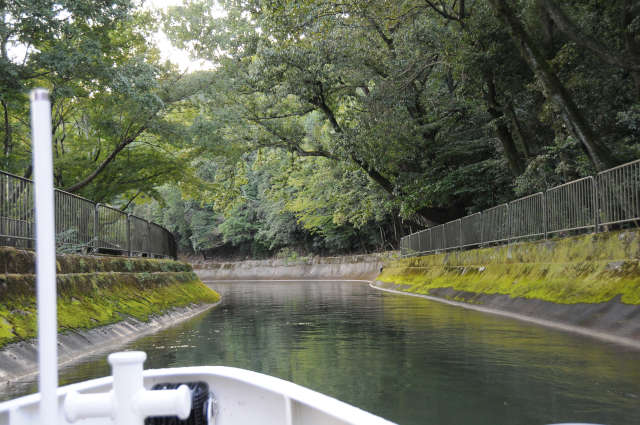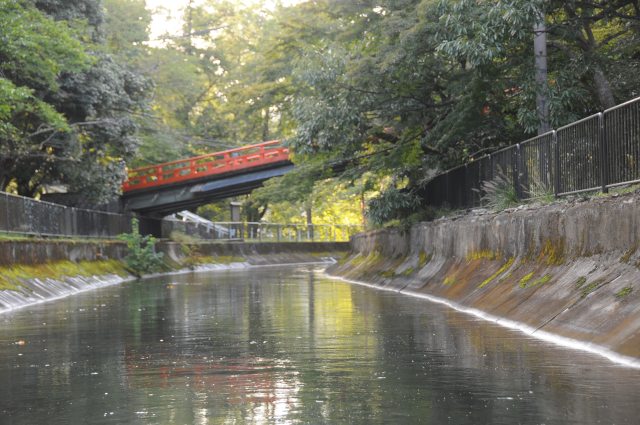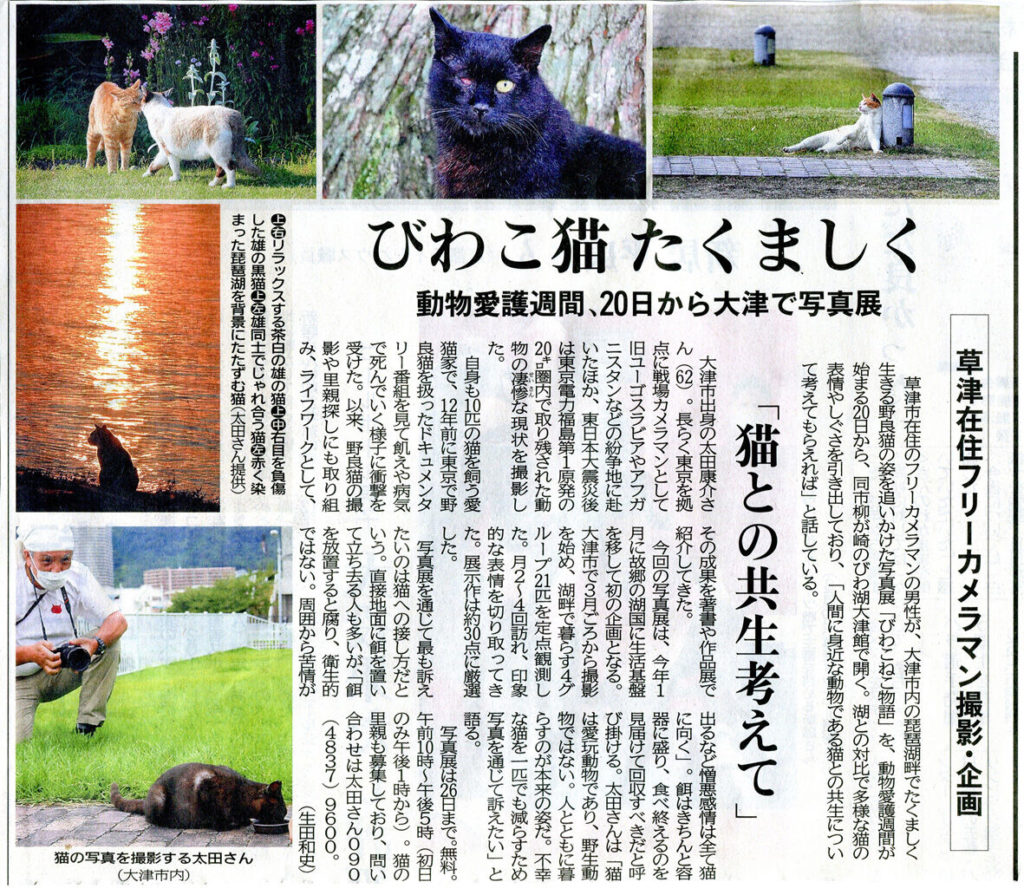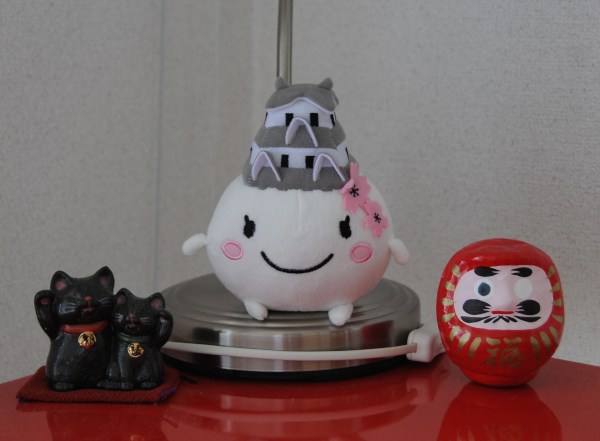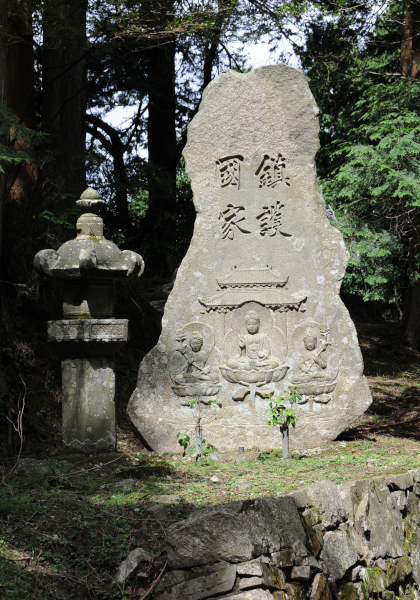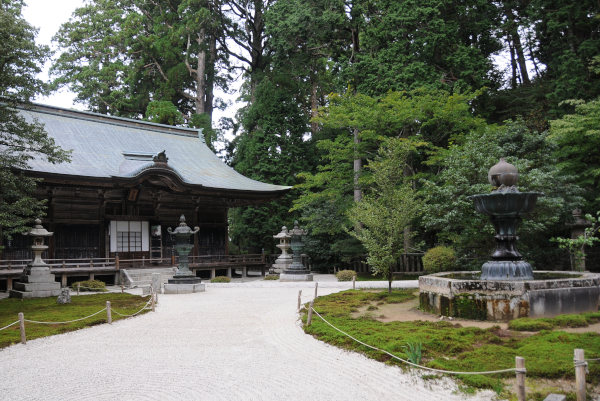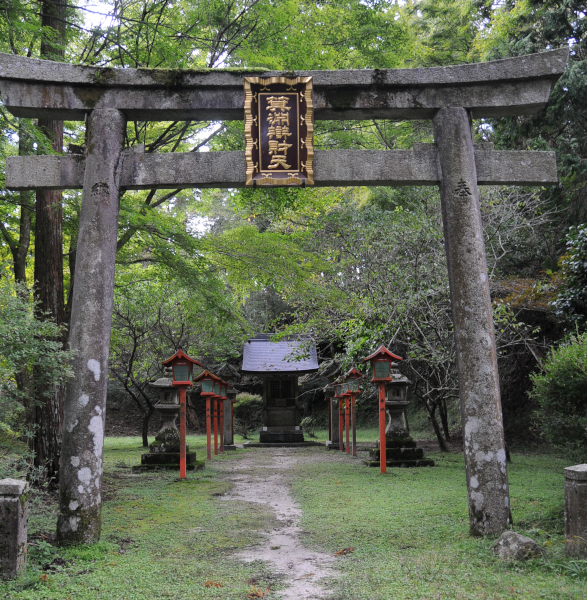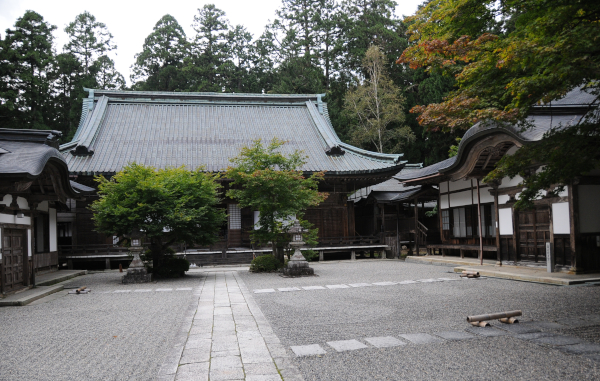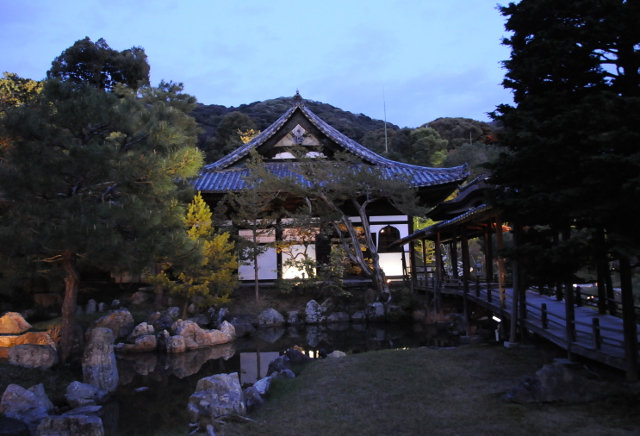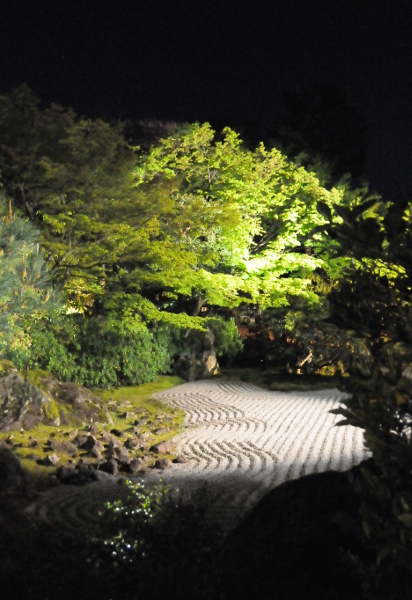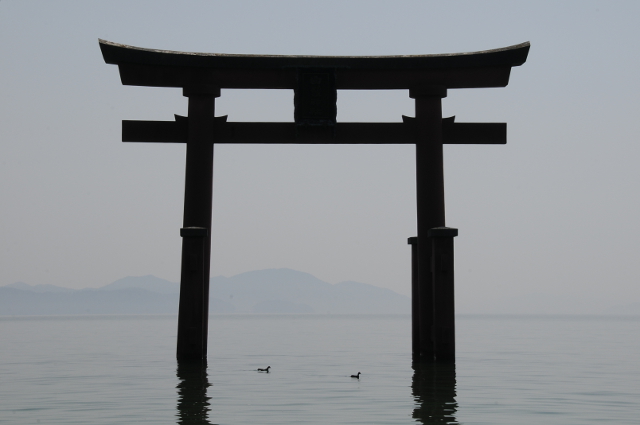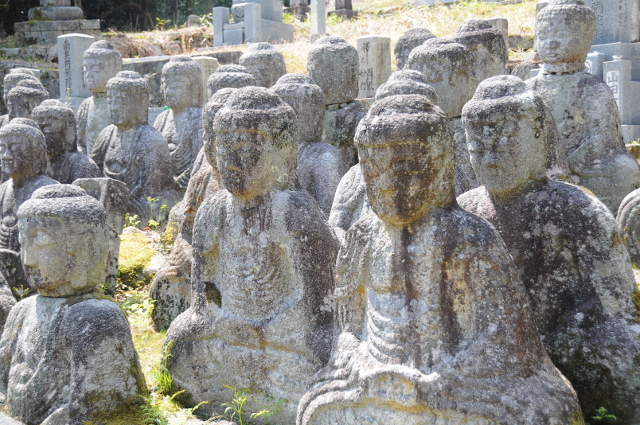Nara, the capital of Nara prefecture, is a small city with 360.000 inhabitants about one hour south of Kyoto. Today, it is a rather typical Japanese city, but some 1300 years ago, from 710 – 794, Nara was the capital of Japan before the imperial court moved to Kyoto. But in this period of only 84 years – called the Nara period – a truly impressive palace was built: Heijo-kyu.
The Heijo palace was built in accordance with Chinese customs: Since the emperor was seen as the head of state, the palace must lie on the head of the capital city, which means, on the northern end. The rest of the city was placed on a strict grid layout. The main north-south road, called Suzaku dori, an enormous boulevard of 75 m width, led from the southern city gate called Rajo mon up to the palace’s main gate Suzaku mon. And the main east-west road – smaller, but still 37 m wide Nijo-oji – also passed in front of Suzaku mon.
This Suzaku gate is a truly impressive building. 25 m wide, 10 deep and 22 m high in two storeys, it was bigger than any other gate of the palace. With its vermillion pillars, white walls and black roof tiles it reminds one of similar buildings in Korea.
It also looks like a smaller version of the Former Imperial Audience Hall, which is situated exactly north of the gate, in an enormous courtyard, where the imperial courtiers had to assemble for official ceremonies like New Year’s celebrations or coronations. The most interesting thing about the Imperial Audience Hall, besides the fact that it is the largest building of Heijo palace with 44 m width, 20 m depth, and 27 m height, is that it has no doors to the south – the lower part of the building is completely open. That means that the emperor could gaze without hindrance over the whole palace and assembled courtiers from his throne in the center of the hall. (In the reconstructed building, glass sliding doors have been installed in the southern wall).
 This whole compound from the early Nara period from Suzaku gate to the Imperial Audience Hall was enclosed in a cloister – a covered walkway with an earthen wall in the middle (and strategically placed gates).
This whole compound from the early Nara period from Suzaku gate to the Imperial Audience Hall was enclosed in a cloister – a covered walkway with an earthen wall in the middle (and strategically placed gates).
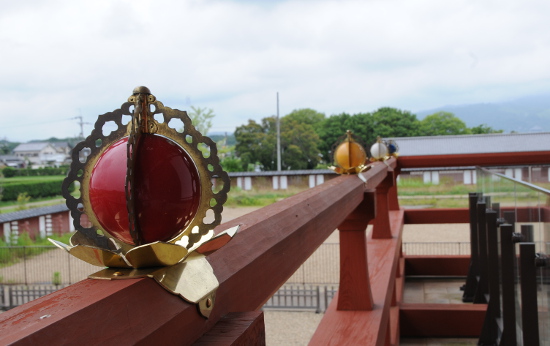 In 745, a new audience hall was built a bit south-east of the old one. North of this Latter Imperial Audience Hall, and east of the former one, lay the Imperial Domicile. On this site, an enormous well was found, lined with Japanese cypress – a hollowed trunk of 1.7 m diameter. Apparently, this well was meant for the exclusive use of the imperial family.
In 745, a new audience hall was built a bit south-east of the old one. North of this Latter Imperial Audience Hall, and east of the former one, lay the Imperial Domicile. On this site, an enormous well was found, lined with Japanese cypress – a hollowed trunk of 1.7 m diameter. Apparently, this well was meant for the exclusive use of the imperial family.
 Nearby were the Ministry of the Imperial Household, the Office of Rice Wine and Vinegars (with another impressively sized well) and a number of other government offices. Those were much more modest buildings with wooden roofs and simple interiors. Interestingly, the smaller government officials – those who had to do all the mundane tasks – at that time sat on chairs and desks as we know them today (probably another import from China) and they wrote on little wooden slats, the top layer of which could be sliced off repeatedly in an early form of recycling.
Nearby were the Ministry of the Imperial Household, the Office of Rice Wine and Vinegars (with another impressively sized well) and a number of other government offices. Those were much more modest buildings with wooden roofs and simple interiors. Interestingly, the smaller government officials – those who had to do all the mundane tasks – at that time sat on chairs and desks as we know them today (probably another import from China) and they wrote on little wooden slats, the top layer of which could be sliced off repeatedly in an early form of recycling.
Actually, recycling seems to have been quite en vogue in that early period. Some of the lower government buildings have been rebuilt six times, probably not for repairs, but for other, hitherto unknown reasons. When the court moved on to Kyoto in 794, some of the buildings were relocated (foremost the Former Imperial Audience Hall). The same probably happened to buildings of lesser value, and some of the building materials may have been used elsewhere. The buildings that were left when Nara was abandoned as capital, either burnt down or simply fell into disrepair and disappeared over time. The land was reused for agriculture and the fact that once there was an Imperial Palace was (partly) forgotten.
 This is the reason why, when you visit Heijo palace today, the most striking aspect of the palace site is the sheer size of it: Once it covered an area of 1 square kilometer, and today it is nothing but a large open field. The current Imperial Palaces in Kyoto and Tokyo may be equally large, but because of all the buildings and trees on the grounds, one doesn’t notice that. In Nara, only from 1959 research, investigation, and excavation on the Heijo Palace grounds have been carried on continuously. The site of the Latter Imperial Audience Hall was only rediscovered in 1974 and reconstruction of some buildings began in 1989. Most remarkable, the Suzaku southern gate and the Former Imperial Audience Hall have been rebuilt in great detail, partly with methods employed in the Nara period itself. Some of the original building materials can be admired in the museums on site.
This is the reason why, when you visit Heijo palace today, the most striking aspect of the palace site is the sheer size of it: Once it covered an area of 1 square kilometer, and today it is nothing but a large open field. The current Imperial Palaces in Kyoto and Tokyo may be equally large, but because of all the buildings and trees on the grounds, one doesn’t notice that. In Nara, only from 1959 research, investigation, and excavation on the Heijo Palace grounds have been carried on continuously. The site of the Latter Imperial Audience Hall was only rediscovered in 1974 and reconstruction of some buildings began in 1989. Most remarkable, the Suzaku southern gate and the Former Imperial Audience Hall have been rebuilt in great detail, partly with methods employed in the Nara period itself. Some of the original building materials can be admired in the museums on site.
 However, whatever building you see at the Heijo palace site is merely an educated guess. There are no historical paintings from that time, and scholars had to piece together information from excavations on the site, from temples built in the same period, or from descriptions of the few historical documents that do exist of or refer to that time period.
However, whatever building you see at the Heijo palace site is merely an educated guess. There are no historical paintings from that time, and scholars had to piece together information from excavations on the site, from temples built in the same period, or from descriptions of the few historical documents that do exist of or refer to that time period.
All in all, if you don’t mind walking around, Heijo Palace is worth a visit. The sheer vastness of (empty) space is impressive, and museums and excavations, even though far apart, are very interesting – and often even come with English translation. And photography is allowed pretty much everywhere, if you turn off your flash.
